The Hovey Museum
by Beth Swift, Archivist, Wabash College

The small exhibit space on the main floor of the Lilly gives the Archives a chance to share a little history with our visitors. Each semester the exhibits tell another small piece of the story of Wabash. This spring the exhibit takes a close look at the Hovey Museum, one of our most interesting buildings. There is something about this building that really captures the imagination. The picture above, which is the centerpiece of the exhibit, shows the museum in all its glory. Here is what we know about this building, its collections and its demise.
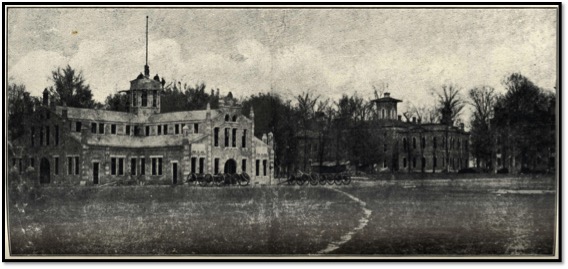
To start our tale it should be noted that this building, built in 1872, occupied the space where the Armory/Gymnasium are located. The Polytechnic Gymnasium, pictured just after its construction was designed by Colonel Henry Carrington to house the Department of Military Instruction which he headed. Carrington not only designed the building and oversaw its construction; he also raised the funds to build it.
After the Civil War the government inaugurated a program in twenty colleges across America intended to teach students the military arts and civil engineering. Our students were required to participate in drills and, for the most part, hated them. This might be due in part to need for some students to pull the cannons, shown in the picture above, while other students learned to fire them. By 1878 the military program at Wabash was discontinued and Carrington went on his way.
After that, the building was used by students as a gymnasium. There are many stories of broken gym equipment and a less than desirable atmosphere in the building which became known as the “Old Barn” among students.
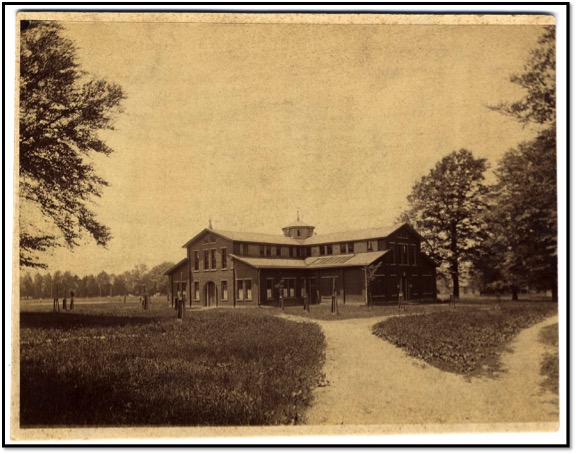
In In 1879 an ambitious young professor, John Merle Coulter, came from Hanover College to teach botany and geology at Wabash. The classrooms in the south wing of Center Hall [now housing the dean and registrar’s offices] were quite large but also stuffed to the rafters with the collections of our first professor of geology, Edmund O. Hovey. They were so full that Coulter felt he could hardly move as he lectured. His great idea was to move the Hovey Collections to the old Polytechnic and rechristen it the Hovey Museum, which was done in 1883.
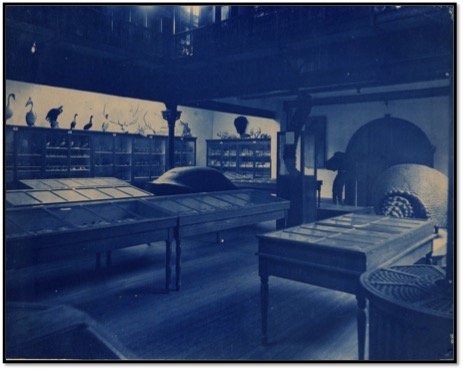
The collections, which can be seen in greater detail in the photo below, were enlarged and carefully catalogued. A true teaching collection was formed.
This image shows one of the alcoves just off the main space. In the cabinets are specimens of all sorts. By scanning this image at a high resolution, we can see in the image below that among the items in the small cabinet at the back of the photo are several varieties of starfish.
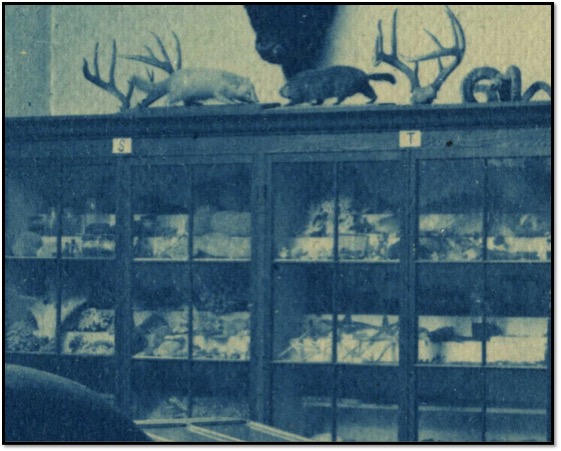
The Hovey Museum thrived and became the home of botany and geology at Wabash. There was, in addition to the great hall as seen above, several rooms that served as classrooms. The image below at left is the zoology classroom in the second floor and at right is the office of the professor with all of the most modern equipment. At the time this photo was taken this was the office of Mason B. Thomas, known forever more as “the Maker of Men” for the large number of his former students that later rose to prominence in botany and zoology.
.jpg)
.jpg)
In 1900 the collections of the Hovey Museum were sent to the newly remodeled South Hall, along with the biology department, and the Polytechnic began to serve other purposes. Below is a picture of the main hall – renamed Assembly Hall and decorated for the inauguration of President Kane. It is interesting to note that this event was also the first public performance of “Old Wabash” which proved such a hit that calls went out for all students to learn the words. For several years commencement was held in this space.
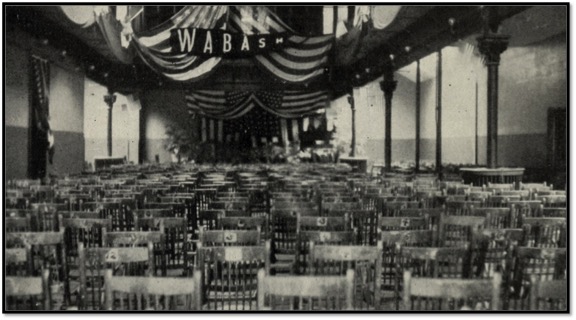
In the next few years the building was less used and became irrelevant to the students. A common theme among the students was the call for a true and proper gym. That the building became the object of ridicule is shown by this quote from the Bachelor of April 20, 1912 which traces its fall from grace, “…the relics of the ages were transported to South Hall and Hovey Museum was again called gymnasium – in the catalogues; elsewhere, ‘the college barn.’ Since then it has been burdened variously with the function of gymnasium, junk house, assembly hall, and fort for hilarious underclassmen.”
While originally built as a gymnasium, it seemed that most students wanted a place to play the new sport of basketball. One quick glance at the posts in the room above show why this space was never going to work for that purpose. Instead, our students went to the dumpy old gymnasium at the YMCA downtown and played basketball. In 1916 the old building was torn down and a beautiful new gymnasium, pictured below with tremendous seating capacity, took its place.
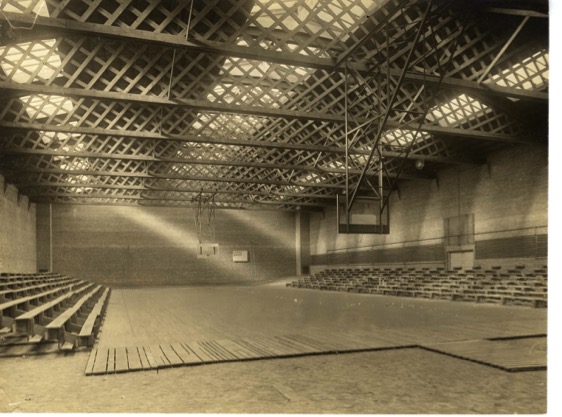
The move to South Hall was the beginning of the end for the Hovey Collection. Too many items and not enough space led to the dispersal of the collection. By 1950, as Waugh Hall was coming into use, the decision was made to break up the collection. A Bachelor article from September 23, 1950 picks up this thread noting that a three man crew - Dr. Eliot Williams and students Charles Lytle and Robert Burress, “…spent the summer cleaning, packing, storing and cataloging the collection.” Some items were sent to other departments on campus, chemistry got the crystals, physical sciences the rock and minerals, the fossils and shells went to the botany and zoology departments. The herbarium was sent to the New York Botanical Garden. Some things went to the Children’s Museum of Indianapolis, some to the Field Museum in Chicago; many things went to Earlham and some to DePauw. In 1968 the Bachelor notes, “The last remaining geological specimens from the old Hovey Museum at Wabash College have been donated to the Joseph Moore Museum and the geology department at Earlham College.”
So ends our tale of the Hovey Museum at Wabash College. It was, like so many things on campus, a very good idea in its time. But as the faculty member most connected with it, Coulter, went off to become the president of Indiana University, there was less interest in museum cases filled with old rocks and fossils. What was needed was a gym to match the rough and tumble of the Little Giant era – a time when the phrase Wabash Always Fights was coming into use. The early 1900’s were a time of change, basketball came to Indiana and “Hoosier Hysteria” has reigned supreme ever since. What good was a gym that was hostile to our favorite sport? The new gym was a beauty, filled with light and with plenty of space to play ball. If you are on campus this spring semester, pop into the Lilly and see the exhibit!